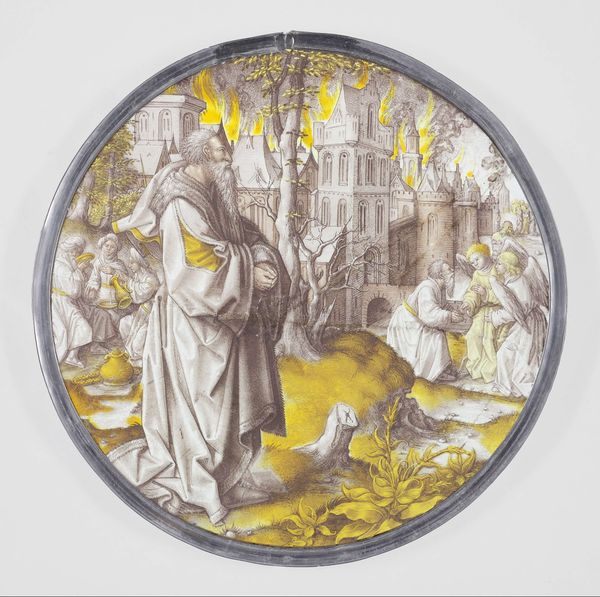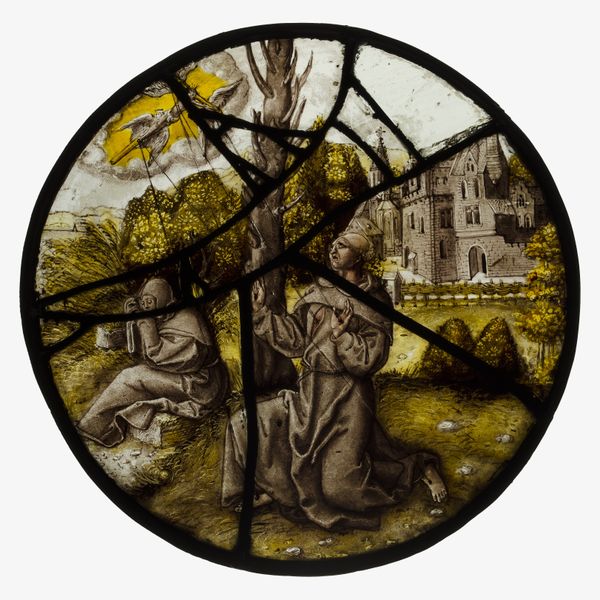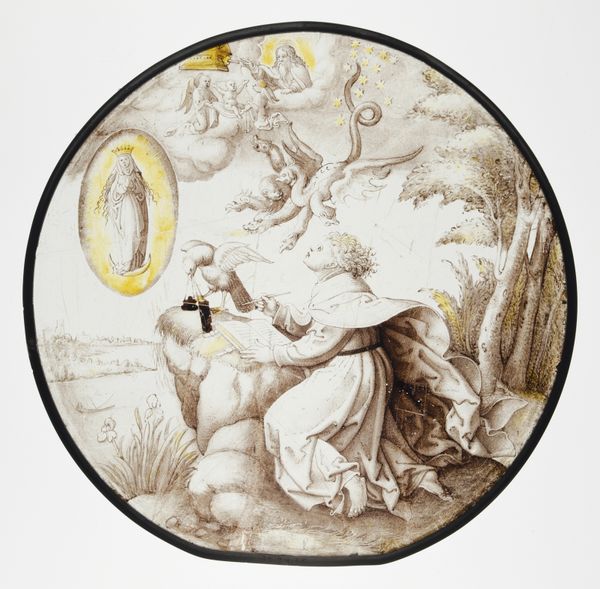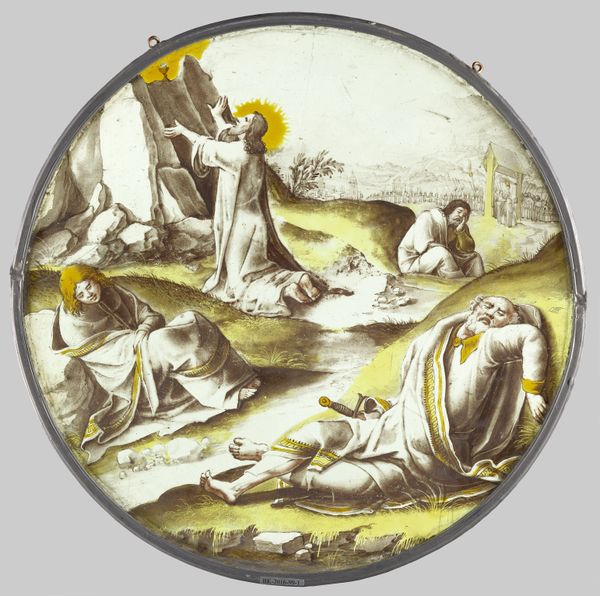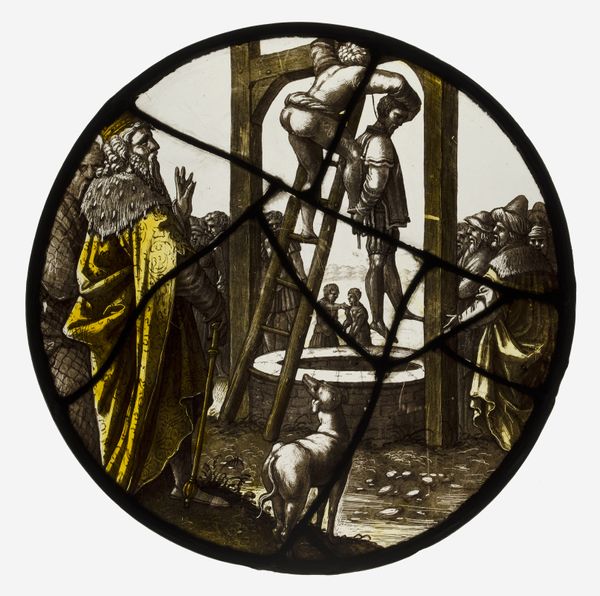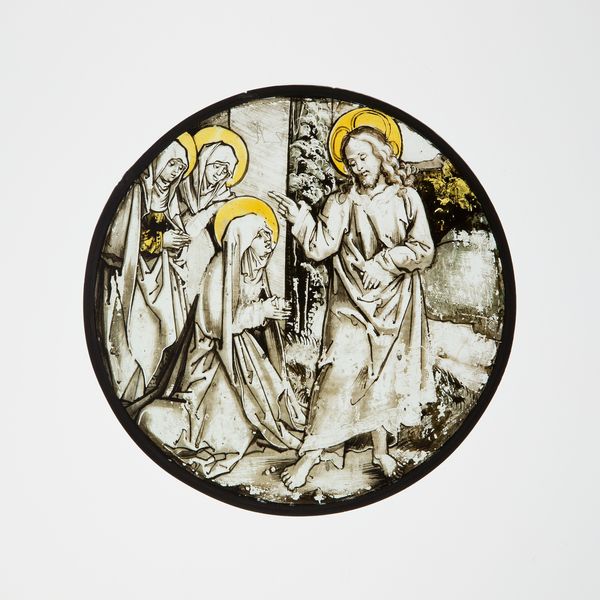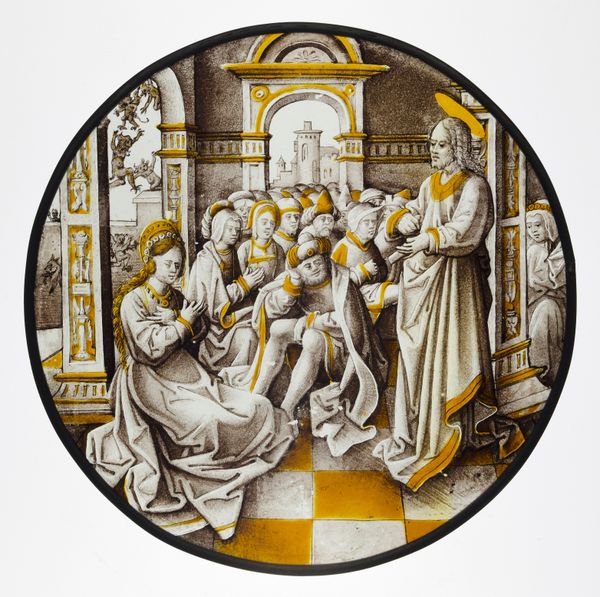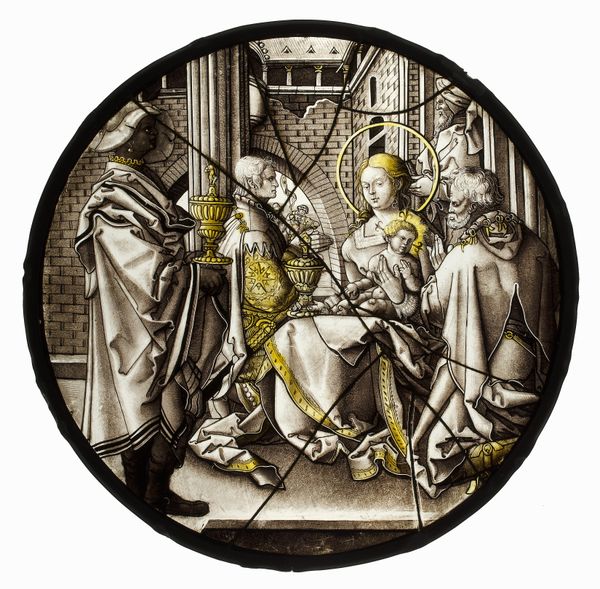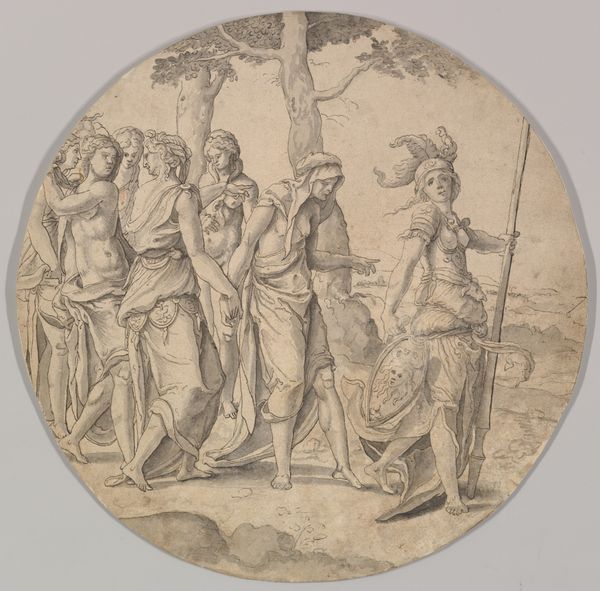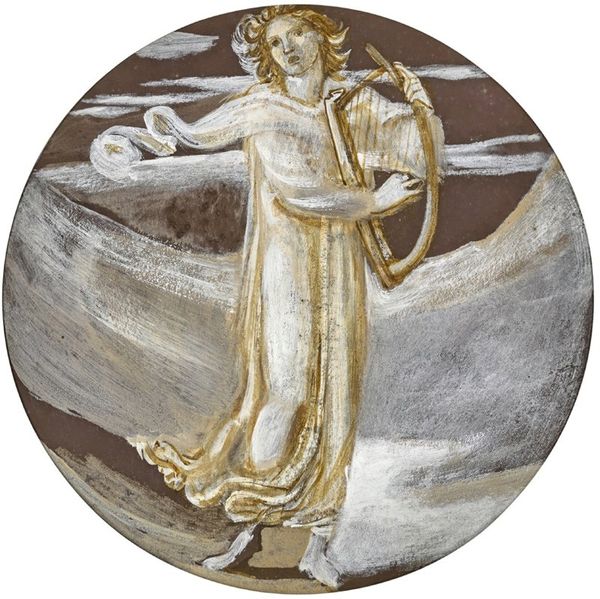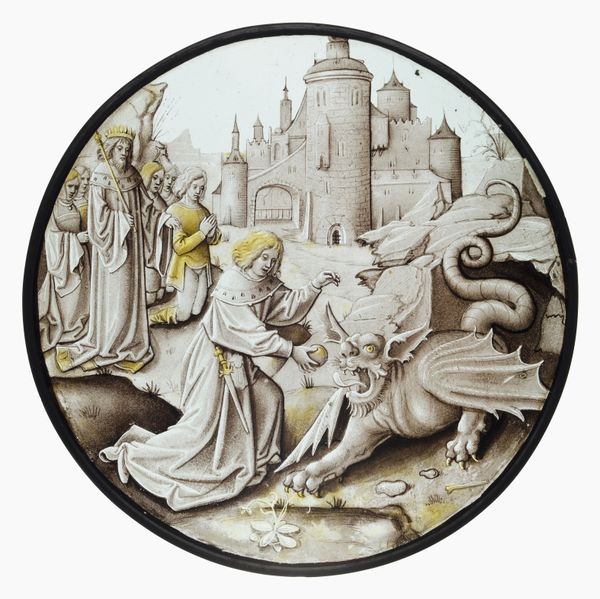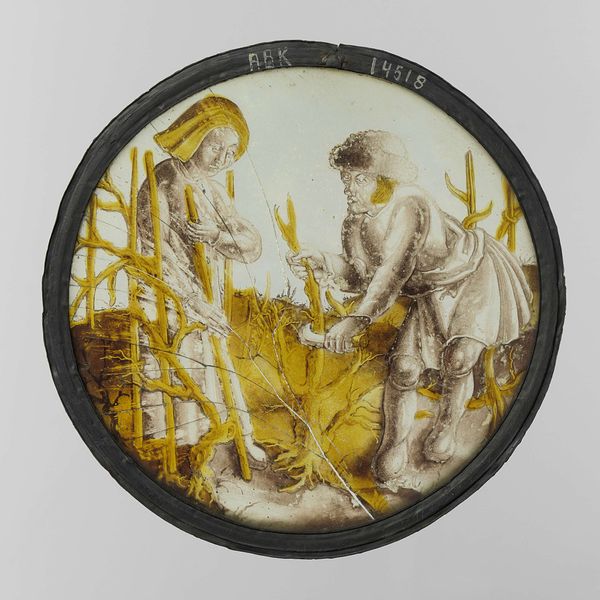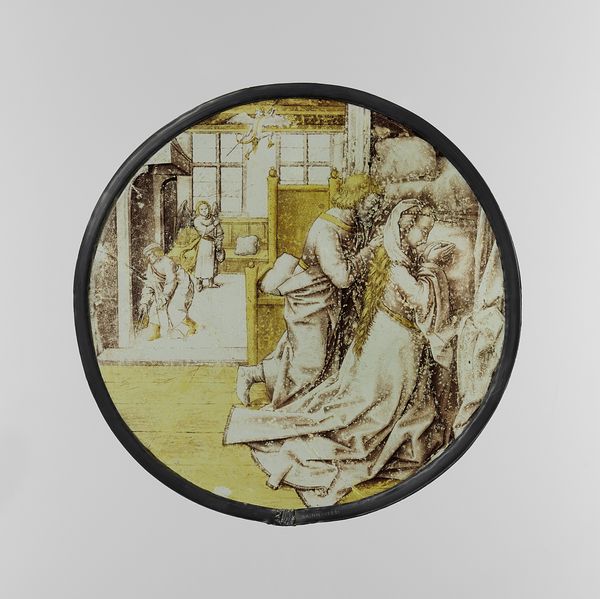
tempera, glass
#
portrait
#
byzantine-art
#
medieval
#
tempera
#
sculpture
#
landscape
#
glass
#
history-painting
#
miniature
Dimensions: Overall Diam.: 9 1/2 in. (24.1 cm)
Copyright: Public Domain
This stained glass roundel depicting Saint John the Baptist was created around the 16th century by Pseudo-Ortkens. Note the lamb resting on the book; it isn't just any lamb, it's the Agnus Dei, the Lamb of God. This symbol identifies John as the prophet who recognized Jesus as the Messiah. The lamb, traditionally a symbol of innocence and sacrifice, takes on a profound theological significance. We see echoes of this sacrificial lamb motif in ancient pagan rituals, where animals were offered to appease the gods. The halo, derived from ancient solar symbols, signifies John's sanctity and divine connection. It is like the nimbus found in Roman art, repurposed to signify Christian holiness. These visual adaptations reveal how cultural memory reshapes and reinterprets symbols over time. Consider the psychological weight of these symbols; the lamb evokes feelings of piety, while the halo inspires reverence. Such imagery continues to resonate, tapping into deep-seated human emotions and beliefs. The past is never truly gone, it lives on in these potent forms.
Comments
No comments
Be the first to comment and join the conversation on the ultimate creative platform.
